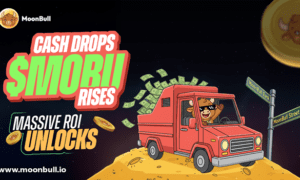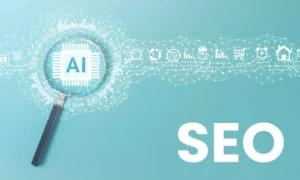17 Unique Strategies to Build Customer Loyalty in Startups
Building customer loyalty in a startup requires more than traditional rewards programs and discount codes. This article presents 17 proven strategies backed by insights from industry experts who have successfully transformed one-time buyers into brand advocates. These approaches range from co-creating products with customers to personalizing every touchpoint in the buyer journey.
- Let Users Decide What You Build
- Deliver Personalized Post-Purchase Experiences
- Invite Customers Into Your Upcycling Journey
- Offer Free Strategic Sessions After Delivery
- Balance Advanced Technology With Human Connection
- Prioritize Returning Clients Over Discount Deals
- Collaborate and Create Genuine Partnerships
- Transform Shopping Into an Engaging Game
- Make Users True Partners in Development
- Provide Personalized Consultations for Every Customer
- Build With Users, Not For Them
- Share Your Vision Through Founder-Led Relationships
- Track Customer Milestones, Not Just Yours
- Connect Customers Directly to Clinical Teams
- Educate Users Through Transparency and Rewards
- Treat Clients as Long Term Partners
- Tailor Onboarding to Individual Customer Needs
Let Users Decide What You Build
Early on, we decided to let users decide what we build next. More than just asking for feedback, we let responses to a form email at onboarding decide what we build next. Every time a new group of users signs up, they get an email asking them two questions: What’s your biggest pain right now? What is a feature you wish we had?
And instead of just collecting the responses and saying, “Oh that was nice of them to do that,” we take pains and wishlist-item replies that 60-70% or more of users give in response to our email as our next priority.
We also share lots of updates with the users as we work on these things, such as short video demos made on platform itself and even emails about where we’re stuck. Then as soon as the thing ships, we send the users who requested it first access along with an email showing how their response fed into the solution.
It results in two things that surveys and feedback forms don’t.
One is that customers feel like collaborators as opposed to just being customers, as they see their words turn into product right in front of them. Second, they see we’re paying attention, which can make them less inclined to churn. They think the product will grow with them.
In the first year after we started doing this, monthly churn went down by almost half. But more importantly, net retention for the users who went through this “build with us” loop has remained over 95% after 12 months, which is off the charts for creator tools.

Deliver Personalized Post-Purchase Experiences
A personalized post-purchase experience was introduced, where customers received style tips, workout suggestions, and early access to limited releases based on their previous purchases. Before this, only about 53% of customers returned for a second purchase. After rolling out this tailored approach, repeat purchases climbed to 77% within six months. What made the difference was not just discounts, but relevance — customers felt the brand understood their lifestyle and needs. The data also revealed that those who engaged with personalized content spent 35.16% more per order than those who didn’t. This strategy turned casual buyers into regular customers and created a sense of community around the brand. Small businesses that focus on meaningful, individualized interactions can often see dramatic improvements in retention, turning one-time buyers into advocates who return consistently.

Invite Customers Into Your Upcycling Journey
One unique way we built customer loyalty was by inviting our customers to be part of the upcycling process itself. We introduced a “Send Your Old Jeans” initiative, where customers could send us their worn-out denim, and we transformed it into a new product of their choice — like a tote or a backpack — with their name hand-stitched inside. This personal connection turned every purchase into a story rather than just a transaction. Within six months of starting this program, repeat purchases increased by 47%, and our customer retention rate improved from 38% to 61%. What surprised me most was how emotionally invested customers became; many shared photos of their old jeans alongside their new bags on social media, bringing in new organic traffic. It taught me that loyalty is not built through discounts, but through shared purpose and emotional connection. When customers see their values reflected in your product, they stay — not just for what you sell, but for what you stand for.

Offer Free Strategic Sessions After Delivery
One unique way I’ve built customer loyalty is by offering free strategic consulting sessions even after project delivery. Instead of ending the relationship when a website or campaign launches, I schedule check-ins 30, 60, and 90 days later to review performance and suggest improvements — no extra charge.
This approach transformed my retention rate dramatically. Clients appreciate the ongoing support and feel genuinely cared for, not just sold to. Many have become long-term partners who refer new business, and about 70% now return for additional services within six months. The key is making customers feel like partners in their success, not just transactions.
Balance Advanced Technology With Human Connection
We’ve discovered that customer loyalty comes from a careful balance of cutting-edge technology and personal connection. While our AI recruiter, RiC, quickly analyzes billions of profiles to identify top candidates, our clients consistently told us they needed more than just speed — they wanted understanding and transparency.
This feedback led us to develop our “human follow-through” model. After our AI creates a candidate shortlist, our recruitment specialists personally review each recommendation, walk clients through the AI’s decision-making process, and show how these insights align with their specific hiring goals. This creates a transparent partnership that feels collaborative rather than transactional.
The impact has been substantial. In just one year, our client retention jumped by over 30 percent. We’ve seen clients renew contracts ahead of schedule and actively refer new business, often mentioning how we helped them “finally understand AI recruiting.” This trust wasn’t built on technology alone but through consistent human communication and education.
Our experience confirms what many startups miss: while technology creates efficiency, genuine loyalty grows from trust and human connection. By combining both elements, we’ve transformed users into long-term partners who advocate for our brand.

Prioritize Returning Clients Over Discount Deals
I stopped offering “special deals” and began providing priority treatment instead. When a returning client books with us, they skip the waiting list. No promo codes, no discounts, just guaranteed service on their schedule. That change did more for loyalty than any marketing campaign. People remembered how reliable we were. They told their friends, “They’ll fit you in no matter how busy they are.” That reputation became our quiet marketing driver.
To put it into action, we built an internal flag system. Repeat clients are tagged, and our dispatch team rearranges routes to make room. It’s sometimes inconvenient for operations, but it turned customers into advocates. Within six months, repeat bookings rose by 37%, and referrals made up nearly half of our new business.
The real takeaway is that providing customers with something extra comes from removing their stress before they even have to ask. In our line of work, being remembered as the company that never leaves anyone waiting is worth far more than any coupon.

Collaborate and Create Genuine Partnerships
Here are some unique ways we improved customer loyalty in our startup.
Initially, we started out as a digital marketing agency that provided white-label local SEO services for marketing agencies. We handled the work while they took the praise.
For our SaaS company, customer loyalty has been built through collaboration and genuine partnership with our clients. Here are the 4 main ways we improved customer loyalty:
-
Asking for feedback: We asked for feedback, and every single time we collected feedback, we made sure to work on the pain points that were mentioned.
-
Loyalty programs: We had referral programs where marketing agencies with the largest number of clients per month got a certain percentage off their subscription, as well as cashback given to them.
-
Exceptional customer service: We made sure that customer service wasn’t just about being formal or professional but about making the customer feel like they’re heard, seen, and supported.
-
Inclusive product development: Like I said earlier, when we started out, we were a digital marketing agency providing solutions, and then we slowly transitioned into a SaaS company providing an AI tool called Paige that helps digital marketing agencies offer local SEO services to their clients.
In providing the AI SEO tool, the first thing we did was get a bunch of the digital marketing agency owners under us to try out our platform. They helped improve our solutions because, as the main users of the platform, they always came up with reviews and features they needed. There was a particular feature we implemented, even though it wasn’t cost-effective, because we believed in their feedback and how much they needed that feature.
These practices have turned clients into long-term partners. Our churn rate is now around 1%, and many agencies that joined our partner program in the early days are still with us years later.

Transform Shopping Into an Engaging Game
Turning shopping into a game has been the most effective and perfect fit strategy to build customer loyalty for my business. My rewards program lets customers earn points for things like daily visits, birthdays, and even referring other Beyblade fans. It’s turned the store into more of a community hub than a transactional checkout page. Repeat purchases now account for a significant share of my monthly revenue, and I’ve seen customers return multiple times a week just to collect points or unlock new reward tiers.

Make Users True Partners in Development
As the CEO of an AI SaaS company, one of the most effective ways we built customer loyalty early on was by making our users true partners in shaping the product. We had a personal relationship with all our customers, and they had a direct line to us, through email or quick calls, to share feedback, frustrations, and ideas.
Our first few users were incredibly patient, especially one who struggled through our early bugs. Because we stayed in constant contact, she felt heard and invested in the process, and that connection kept her with us even when things broke. There was another instance where a user reached out with a serious issue on her end. After connecting, we debugged the issue together, allowing us to improve the product for everyone.
We were able to retain these customers despite multiple issues because of the loyalty we built by giving them a strong voice in our product. This shared sense of ownership turned our early adopters into long-term champions.
Provide Personalized Consultations for Every Customer
One unique strategy we’ve used to strengthen customer retention is offering personalized product consultations for our customers. Instead of just selling bags, we interact with customers to understand their individual requirements, whether it’s for business travel, commuting, or weekend getaways. We provide tailored recommendations based on their lifestyle and travel habits, helping them select the ideal product for their particular needs.
This personalized approach has greatly influenced our customer retention rates. Customers who feel appreciated and understood are more likely to return, and we’ve seen an increase in repeat business as a result. It’s not just focused on the sale, it’s about building a lasting relationship founded on trust and value.
For other startups, my advice is to dedicate effort into truly knowing your customers and go beyond simply selling a product. The loyalty you cultivate will pay off in the long run.
Build With Users, Not For Them
Loyalty grew when we stopped talking at users and started building with them. With Taskade Genesis, we invited people to create their own apps, agents, and workflows inside the platform. The Genesis Library let everyone share and remix what they made, turning our platform into a living ecosystem instead of a tool.
Once people built something others used, they stayed. Their work became part of the community, and that sense of ownership kept them coming back.
It changed how we think about retention. Loyalty didn’t come from rewards or emails — it came from participation. When users see their ideas alive inside our platform, they don’t just use it — they belong to it.
Share Your Vision Through Founder-Led Relationships
A few strategies have worked very well for us.
First, all of our sales pitch meetings and relationships are founder-led. The founder and CEO share the story and vision of why we exist and how we aim to partner with our customers for “joint value creation” for the customer’s business. Connecting the customer to our story and the vision behind the product helps the customer bond with our company, brand, and product, thereby building a stronger relationship. We sell less and listen more. Customer retention is not just about the customer adopting the product but also about us evolving our product to solve our customers’ pain points and meet their expectations and needs.
Second, we partner heavily on product pilots in the enterprise, from aligning our product rollout to the company’s internal Enterprise AI strategy, meeting with users during the pilot to train, understand feature usage, gather feedback, and through Business Value assessment to leadership, proving ROI. A strong relationship combined with proven ROI prior to enterprise-wide adoption sets the runway for customer retention.
Track Customer Milestones, Not Just Yours
You can always reward the customers for hitting your milestones, but what if you instead tracked their milestones? $30 in gift cards when their first order is delivered, or a personalized video plug when they celebrate two years with your product or service. It doesn’t have to be flashy or automated, just on-target and sincere. Bottom line, most customers never expect you to track their achievements…and that is why it has such impact. It feels earned, not scheduled. That is when retention leaps. I’ll say this type of engagement could up re-engagement 20% or more within the first year.
If I’m being honest, this isn’t an incentive program because it’s recognition. When a customer sees their success reflected by your brand, they will stay. You’re no longer a vendor. You become part of their growth story. That’s where the loyalty loop gets sealed…rapidly.
If you want a customer to stay, show them where they’ve been. And then remind them that you saw it. That’s all.

Connect Customers Directly to Clinical Teams
Our customers can directly contact our clinical team through educational sessions which take place after their purchase. Our users receive direct access to short calls which enable them to ask product-related questions, understand scientific aspects, and share their positive or negative experiences. The additional time investment leads to stronger customer relationships that extend past the initial purchase.
The introduction of this contact point has resulted in better subscription retention for our customers who purchase vaginal health products for the first time. Trust development requires more than box delivery because customers need to experience your active involvement and willingness to hear their concerns.

Educate Users Through Transparency and Rewards
One unique way we have built customer loyalty is through transparency and engagement-based rewards. Instead of relying on aggressive marketing, we focused on educating users about how passive income really works and rewarding them for consistent participation via achievements, referral milestones, and community interaction.
This approach turned one-time users into long-term advocates. By building trust and showing users exactly how they earn, Honeygain saw a significant increase in retention and referral-driven growth. Users who felt informed and valued were far more likely to stay active, recommend the app, and engage with new features.

Treat Clients as Long Term Partners
We build customer loyalty by treating clients like long-term partners versus just projects. Retention remains at the core of our operations. Maintaining good relationships with our clients has proven to be extremely beneficial for us. By treating each client as our main priority, we’ve managed to establish trust and build a good reputation in our industry. We go above and beyond for all our clients, and allocate additional hours to client audits to find out every possible way to fulfill their business needs, even if it goes beyond what they’ve originally enlisted us to do.
We have also established quarterly performance reviews, where we forecast, analyze data and optimize strategies in anticipation of future opportunities and prior work. We have continuously delivered and practiced living in transparency in our collaboration, consistently achieving client retention year over year, with many of our clients being multi-year partners.

Tailor Onboarding to Individual Customer Needs
One of the ways we’ve built customer loyalty is by offering a personalized onboarding experience. Instead of a standard process for everyone, we make sure to tailor it to each customer’s specific needs and goals, using CRM data to guide us. This helps customers feel valued from the very beginning and ensures they’re set up to succeed with our product.
The impact on retention has been noticeable. When customers receive personalized support right from the start, they’re more engaged and less likely to leave. It’s also made a big difference in referrals — satisfied customers are much more likely to recommend us to others.
This approach has really shown us that loyalty isn’t just about discounts or rewards. It’s about creating genuine connections and helping customers achieve their goals. And it’s been rewarding to see both retention and satisfaction improve as a result.

Related Articles
- Customer Retention Tactics That Boost Revenue: 18 Expert Lessons
- Customer Retention: 15 Strategies for Building Long-Lasting Relationships – TechBullion
- 20 Customer Retention Lessons of Turning Dissatisfaction into Loyalty








































